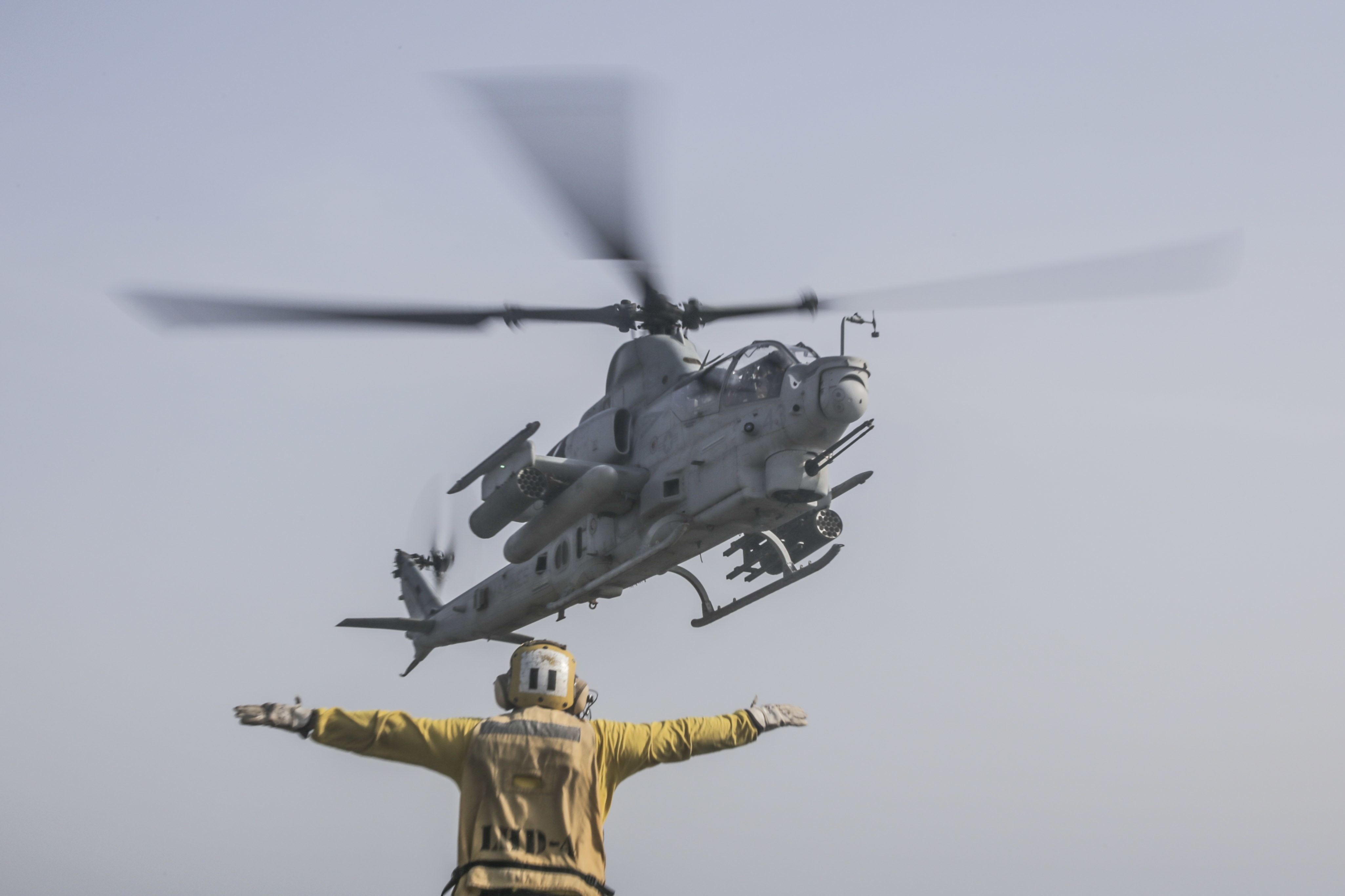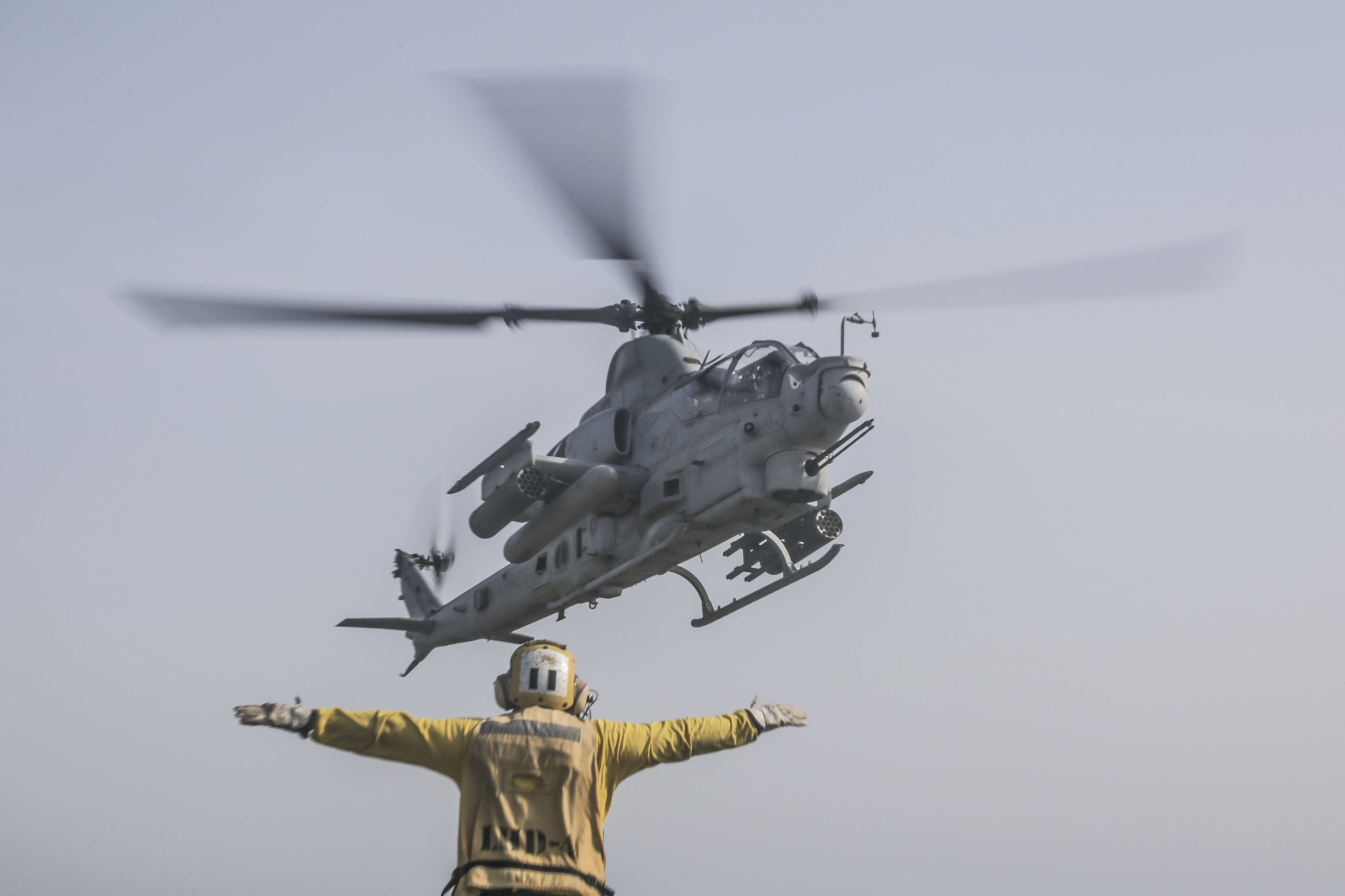Iranian Navy’s Laser Incident with AH-1Z Viper Prompts U.S. Concerns in Arabian Gulf

The Iranian Navy’s use of a laser against a U.S. Marine Corps AH-1Z Viper attack helicopter in the Arabian Gulf raises concerns about safety and professionalism. (Photo: Navy Times)
Iranian Navy Targets U.S. AH-1Z Viper Helicopter with Laser in Provocative Gulf Encounter
According to the Military Times, in the Arabian Gulf, an incident occurred in which the Iranian Islamic Revolutionary Guard Corps Navy targeted a U.S. Marine Corps AH-1Z Viper attack helicopter with a laser during what has been described as an unsafe and unprofessional encounter, as reported by U.S. Naval Forces Central Command.
The AH-1Z Viper, affiliated with the 26th Marine Expeditionary Unit and deployed alongside the amphibious assault ship Bataan, was engaged in routine operations within international airspace when the incident unfolded. Cmdr. Rick Chernitzer, the spokesman for U.S. Naval Forces Central Command, revealed that the Iranian vessels from the IRGCN directed the laser multiple times at the helicopter while it was in flight. Fortunately, no injuries were sustained, and the aircraft remained undamaged.
This provocative action by the Iranian Revolutionary Guard Corps Navy has drawn sharp criticism from U.S. officials. Cmdr. Chernitzer characterized it as an example of unprofessional and irresponsible conduct, emphasizing that such behavior not only jeopardizes the safety of U.S. and allied personnel but also undermines the standards expected of a professional maritime force.
READ ALSO: U.S. Supply Chain Integrity Strengthened As Imports From Chinese Companies Tied To Forced Labor Face Ban
AH-1Z Viper’s Vital Role in Arabian Gulf Amid Rising Tensions and Maritime Security Challenges
According to Navy Times, the AH-1Z Viper, a key asset in the Marine Corps’ rotary-wing ground-attack capabilities, plays a crucial role in providing close air support, anti-armor capabilities, armed escort, visual reconnaissance, and fire support coordination in various operational conditions. Operated by a two-person crew consisting of a pilot and a co-pilot/gunner, Vipers are commonly deployed within Marine light attack helicopter squadrons, with detachments frequently supporting ship-based amphibious exercises and missions as part of Marine expeditionary units.
The incident involving the AH-1Z Viper is situated within the broader context of heightened tensions in the Arabian Gulf. The U.S. Navy had previously deployed the USS Bataan and USS Carter Hall, accompanied by Air Force fighter jets and the destroyer USS Thomas Hudner, in response to Iran’s attempts to disrupt the flow of commerce through the Strait of Hormuz and surrounding waters.
These efforts were initiated following Iran’s seizure and attempted seizure of oil tankers in the Gulf of Oman and the Strait of Hormuz, which required the intervention of the U.S. Navy destroyer USS McFaul. This proactive stance aims to safeguard the region’s security and maintain the free passage of maritime trade. U.S. Central Command has also reported multiple incidents of vessel attacks or seizures by Iran since 2021, underscoring the ongoing challenges in the region.
READ ALSO: Senator Bob Menendez’s Legal Troubles Prompt Senate Democrats’ Deliberations









